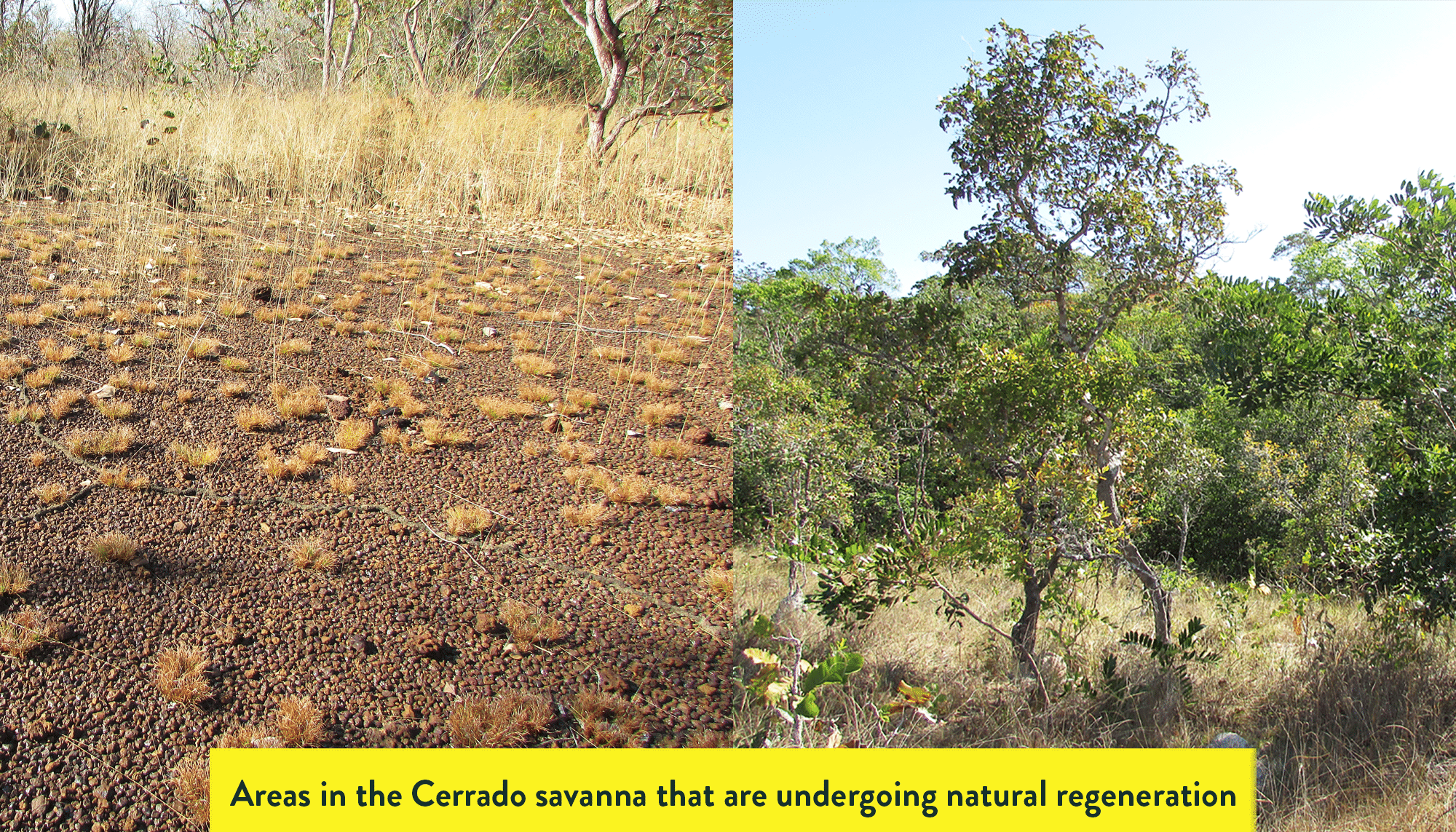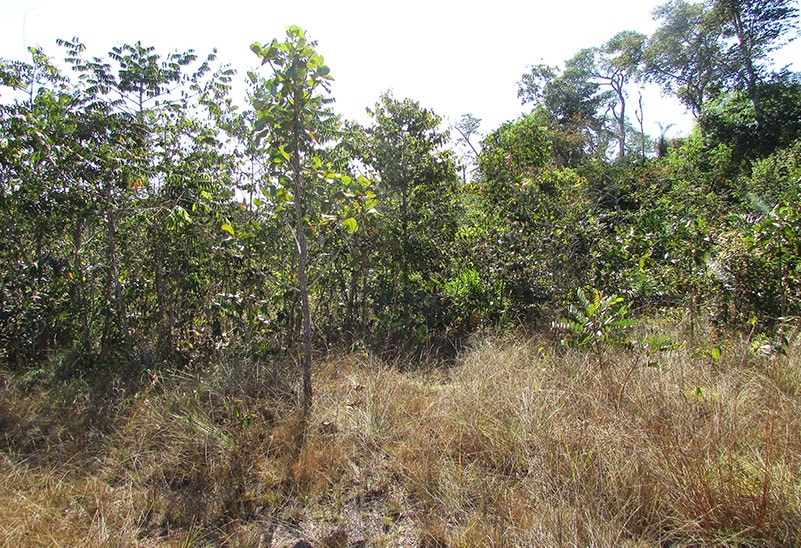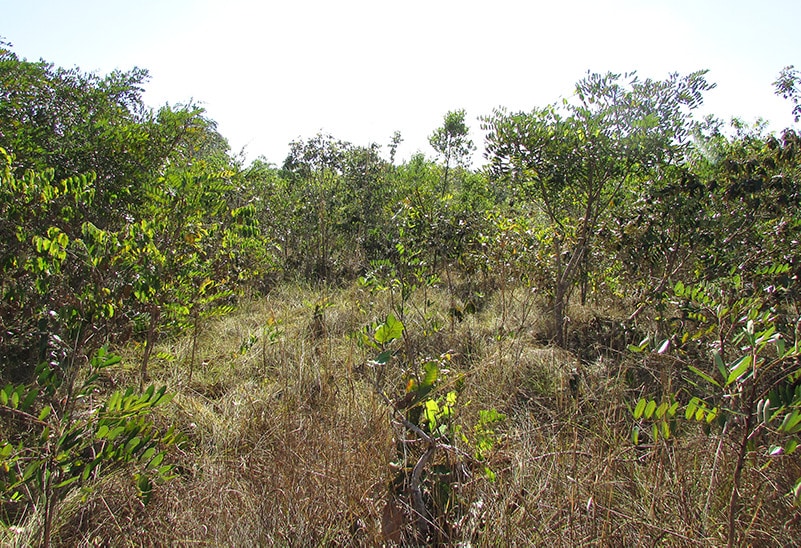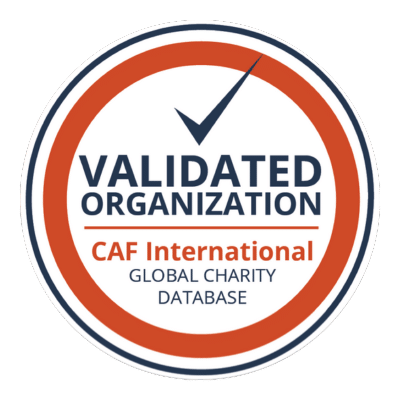Degradation of a given area may happen in different intensities, according to land use. A forest or a savanna that was cut down to be used as pasture land has more potential of recovery than an area where grains are cultivated, for example.

Therefore, there are some conditions in which an ecosystem can recover itself with little or no human interference. If degradation hasn’t destroyed the seed bank in the soil, for example, it can germinate and re-establish the ecosystem, at least partially.
Our technicians are trained in detecting which sites have higher potential of recovering. In some cases, all it takes to restore one given site is to remove the degradation factors themselves. If degradation is being caused by cattle grazing for example, we must build a fence to keep cattle away. Once we detect sprouting trees, bushes and native grasses, we must assist them by controlling competing plants and even fertilizing the soil. All interventions aim at accelerating the recovery that would otherwise take much longer. Monitoring will indicate if other actions should be necessary.
Natural regeneration is, then, an effective and low-cost restoration technique. However, it should only be applied in sites that haven’t gone through severe degradation, in these cases we must prepare the land intensively so it is ready for us to plant new seeds and seedlings!

These are more areas located in the Cerrado savanna that our forest engineers have assessed and concluded that they need minimal intervention from our restoration teams. These sites presented all the necessary elements to restore themselves naturally, so we will simply remove any clear degradation factors, monitor the progress, and let nature do the rest!





